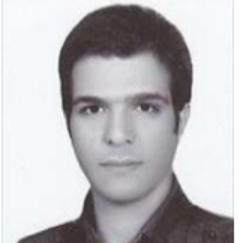
Mohammad Reza Mahmoodi
Work place: Department of Electrical and Computer Engineering, Isfahan University of Technology, 8415683111 Isfahan, Iran
E-mail: mr.mahmoodi@ec.iut.ac.ir
Website:
Research Interests: Image Processing, Pattern Recognition, Computer Vision, Computer systems and computational processes
Biography
Mohammad Reza Mahmoodi was born in Isfahan, Iran, in 1989. He received his B.Sc. and M.Sc. degree in Electronics from Isfahan University of Technology (IUT) in 2011. Since then, he is pursuing his Ph.D. in Electronics at UCSB. His areas of interest include analog/digital circuit design, computer vision, pattern recognition and image processing.
Author Articles
A Comprehensive Survey on Human Skin Detection
By Mohammad Reza Mahmoodi Sayed Masoud Sayedi
DOI: https://doi.org/10.5815/ijigsp.2016.05.01, Pub. Date: 8 May 2016
Human Skin detection is one of the most widely used algorithms in vision literature which has been numerously exploited both directly and indirectly in multifarious applications. This scope has received a great deal of attention specifically in face analysis and human detection/tracking/recognition systems. As regards, there are several challenges mainly emanating from nonlinear illumination, camera characteristics, imaging conditions, and intra-personal features. During last twenty years, researchers have been struggling to overcome these challenges resulting in publishing hundreds of papers. The aim of this paper is to survey applications, color spaces, methods and their performances, compensation techniques and benchmarking datasets on human skin detection topic, covering the related researches within more than last two decades. In this paper, different difficulties and challenges involved in the task of finding skin pixels are discussed. Skin segmentation algorithms are mainly based on color information; an in-depth discussion on effectiveness of disparate color spaces is elucidated. In addition, using standard evaluation metrics and datasets make the comparison of methods both possible and reasonable. These databases and metrics are investigated and suggested for future studies. Reviewing most existing techniques not only will ease future studies, but it will also result in developing better methods. These methods are classified and illustrated in detail. Variety of applications in which skin detection has been either fully or partially used is also provided.
[...] Read more.A Low Cost High Speed FPGA-Based Image Processing Framework
By Mohammad Reza Mahmoodi Sayed Masoud Sayedi
DOI: https://doi.org/10.5815/ijmecs.2016.03.02, Pub. Date: 8 Mar. 2016
In this paper, a high-speed and low-cost image processing framework based on MATLAB-FPGA interface is proposed that can be used in researches aiming at developing wide variety of not only image processing tasks but also many signal processing applications. In addition, this new framework could be exploited for several other tasks such as on-chip verification, using PC as an enormous external RAM for FPGA while preserving high speed data access, developing hardware-software co-designs, etc. The communication between FPGA and MATLAB is via 1Gbs Ethernet based on UDP/IP protocol which is very promising for high speed data transmission in point-to-point communications. UDP stack is efficiently designed in FPGA based on a fully pipelined architecture with minimum level of logic in order to reach high performance.. Dynamic data transmission between the UDP stack, memory and an arbitrary image processing module makes it possible to practically simulate, debug and implement most relevant applications. The hardware system is relatively low-cost and it consumes a negligible area of a Spartan-6 LXT45 Xilinx FPGA. Operating at 1 Gb/s, theoretically, the system is capable of processing 132 frames of 640*480 color images in a second. The effectiveness of the system is evaluated by means of both place and route simulation and practical implementation of a skin detection algorithm and a motion detector.
[...] Read more.Other Articles
Subscribe to receive issue release notifications and newsletters from MECS Press journals